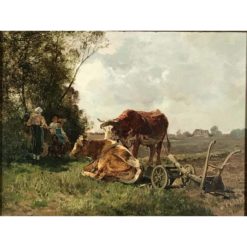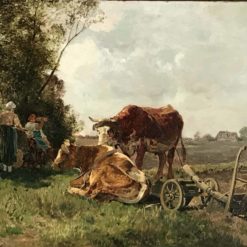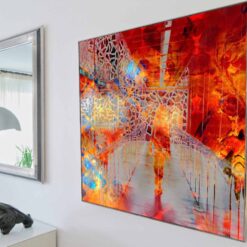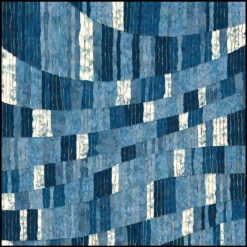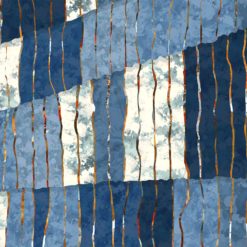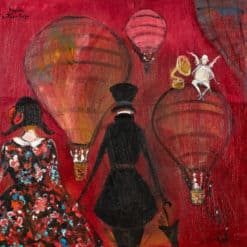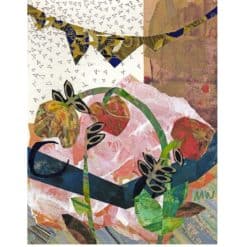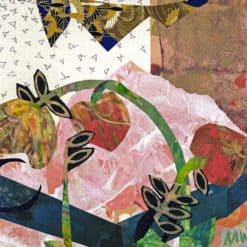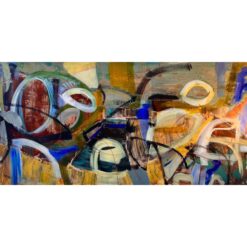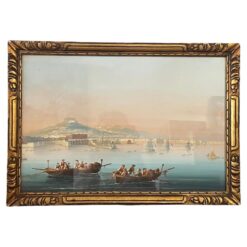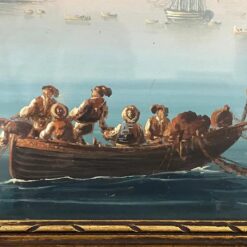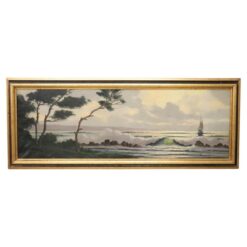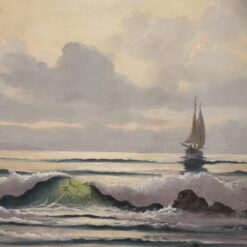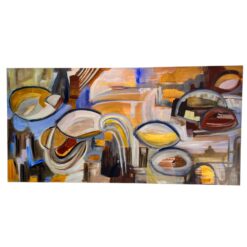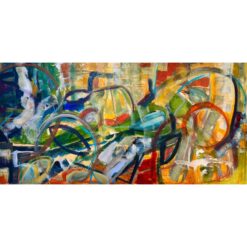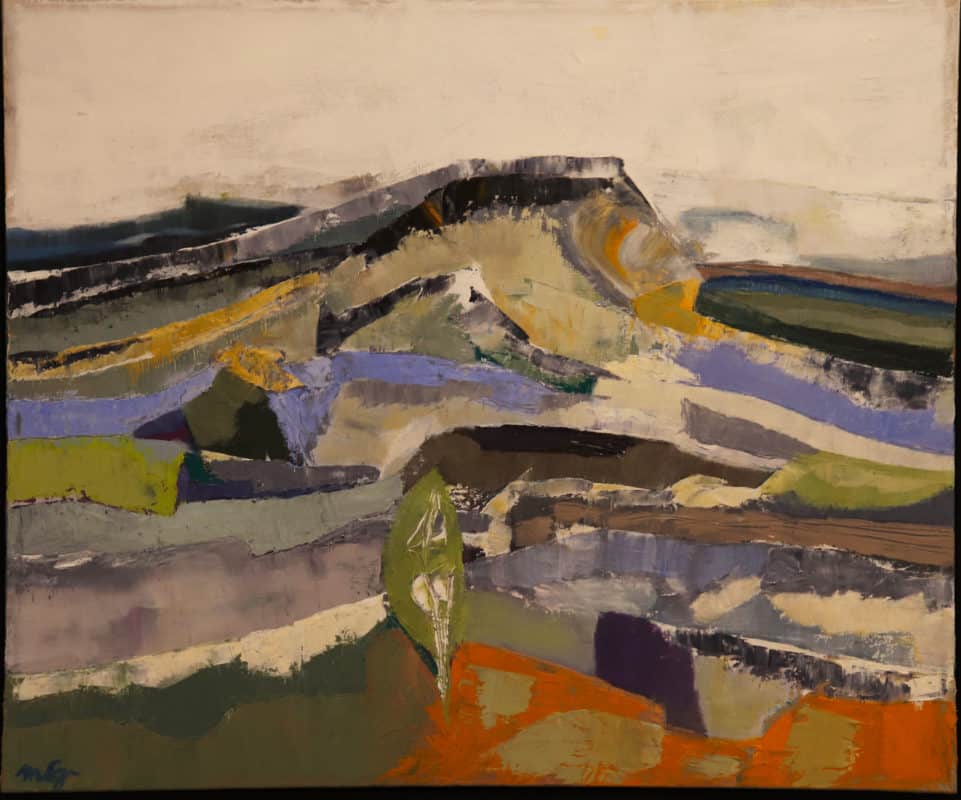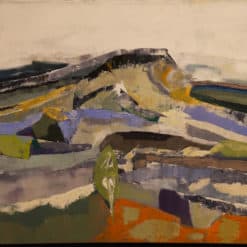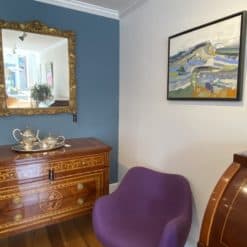Best Sellers
Style
Interview with French Artist, Cécile Ganne
The Work and Inspirations of Cécile Ganne
I had had a wonderful conversation with Cécile Ganne, an extraordinary Cubist artist originally from France. Cécile is now based in Boston, and her work is showcased and sold on Styylish!
Cécile holds a Ph.D. from B.U., Licences de Lettres and Art History from La Sorbonne and Toulouse le Mirail, France. As we began to dive into her work, life and inspirations, she explained that her upbringing in the South of France is where it all began.
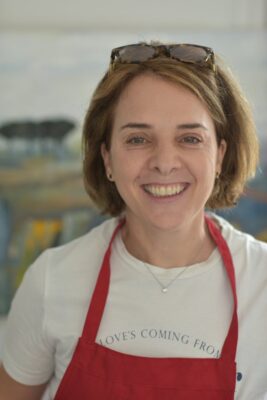
Beginnings in Souillac, a small town in the South of France
Cécile Ganne is a self-taught artist, influenced greatly by her grandmother who was also an artist. Her grandmother’s medium of choice was oil pastels, which sparked her interest early on. Growing up in the serene countryside of southwest France, she had ample time and space to immerse herself in nature and books. She often accompanied her grandmother, observing her painting techniques closely. At the age of 10, she was finally allowed to experiment with the oil paints and brushes, a moment that ignited her passion for painting. Living in Souillac, access to painting supplies was limited, requiring trips to the city, making the materials both scarce and precious, adding a unique depth to her artistic journey.
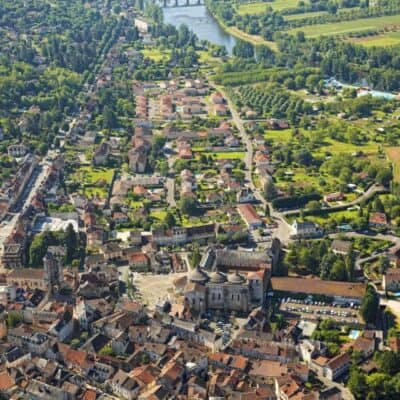
Pierre Betz’s, a prolific French literary journalist, photographer and editor lives in Souillac and greatly influenced the artistic community in Souillac, as well as Cécile’s own art. He arrived in 1910 and brought renowned artists like Jean Lurçat, Robert Doisneau, George Braque, and Paul Éluard to be part of his literary review in Souillac, and may have spent time with Cécile’s own grandmother. Her grandmother, a theatrical and flamboyant figure, frequently hosted her artist friends, creating a vibrant atmosphere. Pierre Betz fostered a surge of artistic work and influence in in Souillac, and greatly impacted Cécile’s grandmother’s work. Therefore, as Cécile’s grandmother was her first exposure to art, Betz’s impact in Souillace also trickled down to Ganne, leaving a lasting impression at the start of her artistic journey.
Cécile said that in retrospect, her Grandmother was also a Cubist artist. Cécile said that observing her grandmother paint was “the opposite of art school.” Instead, her opinionated grandmother trained her why certain elements were “yes’s” or “no’s,” and Cecile figured the rest out on her own.
Cubism and her Artistic Inspirations
For Cécile, the correlation between effort and the quality of work is direct—the more one works, the more remarkable their creations become. She embraces limitations, often starting her paintings with a restricted palette, believing that colors hold greater significance than the subject matter itself. In her process, shapes emerge from colors, not the other way around, a principle aligned with Cubism, where color plays a pivotal role in creating space. Unlike traditional perspective, which she finds uninteresting, she views color as the key element in shaping the perception of depth and dimension in her art.
Cécile’s artistic inspiration lies less in particular themes and more in the tangible tools of her trade, particularly palette knives and the physicality of paint. Initially drawn to landscapes, she found herself captivated by the natural beauty of the trees and scenery of her native France. Then, to combat creative blocks, Cécile would often rotate her canvas to view her work in a different light. When she did this, the trees of her landscapes eventually morphed into bottle shapes.
Struggle Inspires Work
Diagnosed with cancer in 2010, Cécile found herself bedridden and in search of a meaningful distraction. Previously, she had been a devoted gardener, but the physical demands had become overwhelming. Turning to painting as a form of solace, Cecile discovered a newfound freedom in creating art for herself, unbound by rules or expectations. This shift in focus felt both exhilarating and precarious, as the urgency of her situation made every moment feel vital. Embracing this mindset, Cécile approached each painting as if it were her last, infusing her work with a sense of urgency and depth that transcended artistic boundaries.
To The Lighthouse
In her piece, “To the Lighthouse,” Cécile was immensely inspired the Virginia Woolf novel of the same name and by the bowler hat of that 1920’s, which takes center stage in the painting. During her time in graduate school, she delved into the works of Virginia Woolf, captivated by Woolf’s ability to intertwine and obscure the boundaries between external and internal realities.

One of Woolf’s narratives, where a character gazes at a boat in the distance, resonated deeply with her. This painting embodies the essence of women seeking their identities in their lives, their roles and their work.
Escapade
In her piece, “Escapade,” which was recently sold at the Styylish store, before oil paints are applied with a palette knife, the canvas received a special treatment with multiple under layers of structured gesso, cold wax and resin. The oil still-life painting combines a cubist theme with a whimsical element of poetry. Further, each vessel seems to have a life and personality of its own.
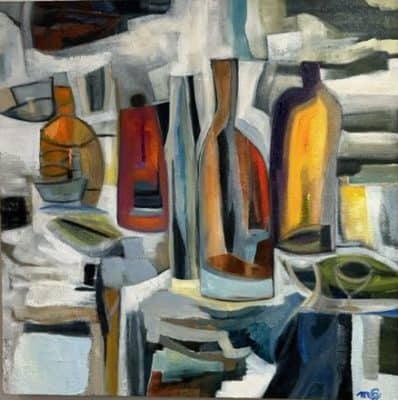
She dedicates an extraordinary amount of time to layering her paintings. Cécile skillfully manipulated different shades of black to create depth and texture in this piece. In her works, the bottles appear to glide gracefully across the canvas, as if swimming through the layers of paint. This meticulous process adds a dynamic and fluid quality to her art. Thus, inviting viewers to immerse themselves in the subtle interplay of colors and forms.
Portrait of a Lady
Cécile evolved into painting people, after realizing that people are landscapes in their own right, in a way. She is very intrigued by the idea of portraying emotions and feelings. She sees the human figure not as an individual ego, but as an extension of the vast landscape. Thus, each person embodying a unique terrain of emotions and experiences.
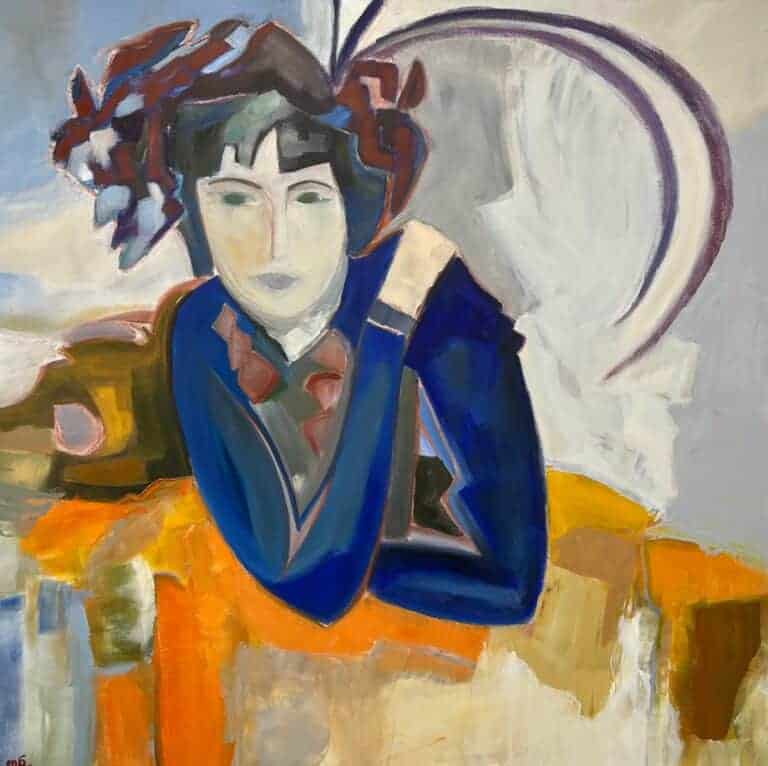
Her piece, “Portrait of a Lady, was inspired by copies of “La Mode Illustrée,” one of the first French Hand Colored Fashion Advertisement issued at the turn of the 19th-20th century.” These brochures, adorned with images of lavish hats, voluminous sleeves, and feathers, served as her formative visual inspiration. She said, “Some children grew up with Disney, this is what I grew up with.” Last year, she finally brought the cherished memories of he brochures to life on canvas. The concept for the painting was inspired by a rich palette of orange, blue, and wine colors, rather than focusing solely on the depicted woman herself. While the lady’s outfit and ornate hat are reminiscent of 19th century fashion, the rest of her accoutrements merge into a modern landscape.
On the Horizon for Cécile Ganne
Cécile is poised for a series of exciting exhibitions and projects in the future. She is gearing up for a major corporate show at the New England Biolabs in Rowley. And following, rotations and a solo show at a Three Stone Gallery in Concord, Massachusetts. Alongside these ventures, she will be working on several commissions. A recently completed piece that explores the myriad shades and gradients achievable with a limited blue palette.
Reflecting on her creative process, she likens it to solving a puzzle. It is a continuous cycle of narrowing down ideas, almost grasping them, then losing them, only to refine and reconcile them anew. She finds that much of creation is idiosyncratic, a personal journey of making things fit.
You can see a selection of Cécile’s work at the Styylish’s brick and mortar store in Belmont MA and on the Styylish website. You can also visit her at her personal studio in SoWa, Boston. She thrives on engaging with people to understand their connection to her art. She relishes the opportunity to meet individuals from diverse backgrounds and age groups.
As Cécile looks ahead, her passion for art and people continues to fuel her artistic endeavors. She has a promising a future filled with creativity, exploration, and connection. When not creating, she teaches French at Wellesley College.
The Styylish team will be happy to collaborate with Cécile on specific commissions for the individual interior design styles of our esteemed customers, please contact us for any questions you might have.

